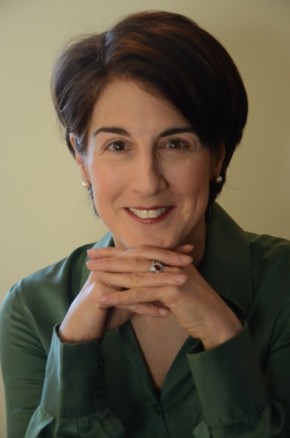Best Practice: Karina Robinson
15 Dec 2015

Martha Kimuyu Kinai, 68, started a woman's group when she was 18. She has 4 grandchildren and teaches her community how to make charcoal clay using wood charcoal and soil mixture. Martha is an example in Mumandu 15kms from Machakos near Nairobi, and has learned more business skills from Hand in Hand training.
Welcome to Best Practice, Hand in Hand’s occasional series of interviews with leaders in the fields of development, finance, women’s empowerment and more. In this, our second instalment, we speak to Karina Robinson, CEO of Robinson Hambro Ltd.
Robinson spent most of her career as a journalist covering international financial news for The Banker, the International Herald Tribune and Bloomberg/TV. In 2011 she co-founded Robinson Hambro, which focuses on Board search, provides Chairman and CEO advisory services, and helped launch Women on Boards, a code of conduct for search firms aimed at increasing the participation of women. She sits on the Advisory Board of the Global Female Leaders Summit, chairs a chapter of the Kilfinan Group, which mentors CEOs of charities, and was a Trustee for The Money Charity.
How did you become involved in women’s issues?
Like most women in my generation who were leaving university, I made the mistake of thinking the world was my oyster and there would be no difference between me and the male colleague who graduated at the same time. Then, at a certain point, a few things come into play: one, you have children; two, you have a slightly different perception of self-worth; and three, there are structural issues out there in the world of work, at the director level and climbing up that way, that work against you.

Karina Robinson
I was a late convert but I now believe in quotas. When I was younger I would have been incensed if I had been put on anything as part of a quota, but I realised it was very important that women have role models. That’s why the work that [CEO of Newton Investment Management] Helena Morrissey has been doing with the 30% Club is crucial. You need to see women on boards to help inspire young women.
What’s the financial argument for putting women on Boards?
McKinsey have done studies, Bain have done studies, everybody has done studies, and the evidence speaks for itself: when you have at least two women on a Board a company’s performance is better, its risk profile is better.
Hand in Hand uses a similar argument when people ask why most of our members are women: ‘Because the evidence tells us women in the developing world spend 80 percent of their incomes on family members and communities, whereas men spend 40 percent. Simple as that.’
Women tend to have a wider view of what business is for – what it stands for. Work is about providing employment for people. It’s about providing a sense of worth and the money to take home for yourself, your family, for society. Every employee matters. Your suppliers matter.
What, in your mind, is the most compelling argument for prioritising women in international development?
The case for microcredit always being used through women is just so unequivocal. Empowering women at whatever level in society, and in whatever country, is bound to lead to a better society.
Hand in Hand’s job creation model supposes there’s a latent entrepreneur – that is, a leader – in everybody. Your work with Robinson Hambro means you trade in leadership. Can good leadership be taught?
Good leadership can be taught, and it doesn’t have to be taught in a classroom. Often the best lessons are taught outside the classroom when you’re actually creating a business. So often, entrepreneurs don’t think they’re leaders until they realise all of a sudden, ‘I have created a business employing people and I am therefore a leader.’ And it doesn’t matter whether you’ve created a business with three employees or 10,000 – you have to lead. All entrepreneurs have to be leaders because you’re forging ahead with a possible new path and having to persist in the face of opposition.
Be it volunteering with The Money Charity, which teaches financial literacy, or working to benefit women in business, there’s a fair amount of common ground between your work and ours. Clearly there are some universal themes here, only I’m not sure what they are.
I think my whole career has been about drawing away the veils that obscure the reality of how the world works, how finance works – especially for women, who often assume it’s beyond their capability. At the same time, you’re showing women they can be in charge of not only their own funds, but other funds, and can turn those to productive use. There is no mystery to something that, once you do it, appears very obvious.
